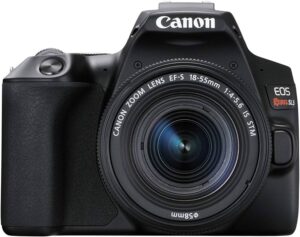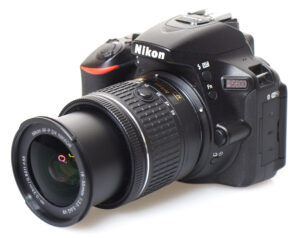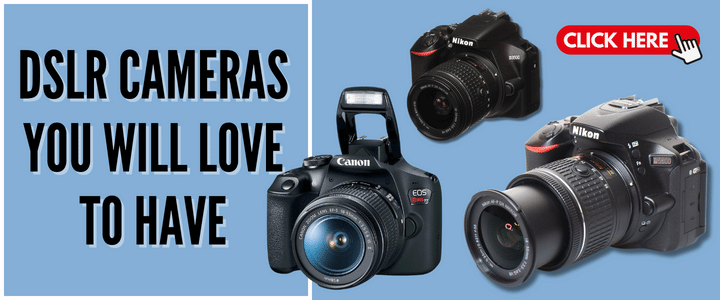Jump To A Specific Section
A Guide to Your First Big Camera Purchase
Entering the world of DSLR photography can be both exciting and a bit daunting. With so many options available, it’s crucial to find a camera that not only fits your budget but also your level of experience and photography goals. In this guide, we’ll explore some of the best DSLR cameras for beginners, helping you make an informed decision for your first big camera purchase.
Understanding DSLR Cameras
Before diving into the models, let’s briefly understand what a DSLR (Digital Single-Lens Reflex) camera is. DSLR cameras use a mirror mechanism to reflect light from the lens to an optical viewfinder. This setup allows you to see exactly what the lens sees and gives you a plethora of manual controls and interchangeable lenses, making them a preferred choice for photography enthusiasts and professionals.
Top Best DSLR Cameras for Beginners
1. Canon EOS Rebel T7 / EOS 2000D
The Canon EOS Rebel T7, known as the EOS 2000D outside the United States, is an excellent entry-level DSLR. It features a 24.1MP APS-C sensor, providing high-quality images and a user-friendly interface perfect for beginners. The built-in guide mode helps newcomers understand camera settings, and its full HD video capability is a nice bonus. (click here for reviews)
2. Nikon D3500
Nikon’s D3500 is another fantastic option for beginners. It boasts a 24.2MP DX-format sensor, renowned for its low-light performance. Its ergonomic design makes it comfortable to hold for long periods, and the battery life is impressive. The Guide Mode is particularly useful for beginners, offering step-by-step instructions and easy-to-understand controls. (click for reviews)
3. Canon EOS Rebel SL3 / EOS 250D
The Canon EOS Rebel SL3, also known as the EOS 250D in some regions, is the world’s lightest DSLR with a movable screen. It features a 24.1MP sensor and offers 4K video recording – a rare find in entry-level DSLRs. Its Dual Pixel CMOS AF system is excellent for live view and video, making it a versatile choice for beginners interested in both photography and videography. (click for reviews)
4. Pentax K-70
While not as well-known as Canon or Nikon, Pentax offers some compelling DSLR options. The Pentax K-70 has a 24.2MP APS-C sensor and is known for its weather-resistant build – great for outdoor photography. It also has in-body image stabilization, a feature not commonly found in entry-level DSLRs. (click for reviews)
5. Nikon D5600
The Nikon D5600 is a step up from the D3500 and offers more features for those who might quickly outgrow the most basic models. It has a 24.2MP sensor, a fully articulating touchscreen, and offers both Wi-Fi and Bluetooth for easy photo sharing. (click for reviews)
Factors to Consider When Choosing a DSLR
- Budget: DSLR cameras range in price, so it’s important to set a budget before you start looking.
- Ergonomics: Make sure the camera feels comfortable in your hands.
- Features: Consider what features are important to you, such as video capabilities, Wi-Fi connectivity, or weather sealing.
- Lens Compatibility: Check the availability and cost of compatible lenses.
- Future Needs: Consider a camera that you can grow into as your skills improve.
Why Should You Switch To DSLR Cameras
While mirrorless cameras have gained popularity in recent years, DSLRs (Digital Single-Lens Reflex) still offer a compelling set of advantages that make them a worthwhile choice for many photographers. Here are some key reasons why you should consider switching to a DSLR camera:
-
Superior Image Quality: DSLRs typically boast larger image sensors compared to point-and-shoot or mirrorless cameras. This results in better image quality, particularly in low-light conditions, with reduced noise and improved dynamic range.
-
Interchangeable Lens System: DSLRs offer a vast selection of interchangeable lenses, allowing you to adapt your camera to various shooting scenarios. Choose from wide-angle lenses for capturing expansive landscapes, telephoto lenses for zooming in on distant subjects, or prime lenses for exceptional sharpness and low-light performance.
-
Optical Viewfinder: DSLRs feature an optical viewfinder that provides a real-time, unmediated view of the scene. Unlike electronic viewfinders in mirrorless cameras, optical viewfinders are unaffected by lag or refresh rate issues, ensuring a smooth and responsive shooting experience.
-
Durability and Build Quality: DSLRs are generally known for their rugged construction and durability, making them well-suited for outdoor and challenging environments. They often feature weather-sealed bodies to withstand dust and moisture, ensuring reliable performance in various conditions.
-
Affordability: DSLRs have become more affordable in recent years, making them accessible to a wider range of photographers. Entry-level DSLRs offer excellent image quality and performance at competitive prices, while high-end models cater to advanced enthusiasts and professionals.
Best Beginner Camera Shooting Modes To Know
When you’re just starting out with a DSLR camera, understanding and using the right settings can significantly improve your photography. Here’s a beginner-friendly guide to setting up your DSLR for taking great photos:
1. Shooting Mode: Start with Auto or Semi-Automatic Modes
- Auto Mode: In this mode, the camera selects the best settings for you. It’s a good starting point if you’re completely new to photography.
- Aperture Priority (A or Av): This mode allows you to control the aperture (the size of the lens opening) while the camera sets the shutter speed. It’s great for controlling the depth of field (how much of your photo is in focus).
- Shutter Priority (S or Tv): Here, you control the shutter speed, and the camera chooses the aperture. This mode is useful for capturing motion – use a fast shutter speed to freeze action or a slow one for a blur effect.
2. ISO Setting: Balancing Light Sensitivity
- ISO determines your camera’s sensitivity to light. A lower ISO (100-400) is ideal for bright conditions, while a higher ISO (800 and above) is better for low-light situations.
- Be cautious with high ISO settings, as they can introduce grain or “noise” into your photos.
3. Focus: Ensuring Sharp Images
- Auto Focus: Start with auto focus. Modern DSLRs have excellent auto focus systems that are great for beginners.
- Focus Points: Learn to select different focus points in your viewfinder for more control over what part of your image is in sharp focus.
4. White Balance: Getting the Colors Right
- While auto white balance usually does a good job, experimenting with different white balance settings (like Daylight, Cloudy, Tungsten) can help you achieve more accurate colors in different lighting conditions.
5. Exposure Compensation: Adjusting Brightness
- If your photo is too dark or too light, use the exposure compensation feature to make it brighter or darker. This is a simple way to adjust exposure without changing other settings.
6. File Format: RAW vs JPEG
- As a beginner, shooting in JPEG is fine. It’s a widely used format and doesn’t require post-processing.
- As you get more comfortable, consider shooting in RAW. RAW files contain more data, giving you greater flexibility when editing.
7. Metering Modes: Evaluating Light
- Start with the default metering mode (usually evaluative/matrix metering), which assesses light across the entire frame.
- As you gain experience, experiment with spot or center-weighted metering for different lighting situations.
8. Drive Mode: Single vs Continuous Shooting
- Use single shooting mode for most situations.
- Switch to continuous (burst) mode when capturing action or fast-moving subjects.
9. Image Stabilization
- If your lens or camera has image stabilization (IS or VR), turn it on to reduce camera shake, especially in low-light conditions or when using a telephoto lens.
10. Practice and Experiment
- The best way to learn is by practicing. Take your camera everywhere and shoot as much as possible.
- Review your photos to see what worked and what didn’t, and adjust your settings accordingly.
Remember, these settings are just a starting point. Photography is as much about creative expression as it is about technical skills. Don’t be afraid to experiment with different settings to see how they affect your images. Happy shooting!



